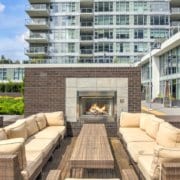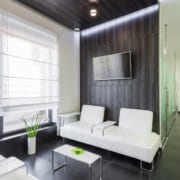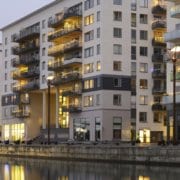Medical Office Buildings: Why Investors Are Drawn to This Type of Investment
The medical office building (MOB) market is a niche market that has seen a significant increase demand from investors over the years. Many factors, including resilience during market shifts, consistently high occupancy rates, and overall positive outlook, contribute to this asset’s desirability. In 2018 alone, medical office buildings were anticipated to grow by about 22 million more square feet, and roughly $4.7 billion’s worth of medical office buildings traded in the first half of 2019. Today, the number of MOBs is expected to rise as the population progressively ages. Particularly in a volatile market, investors seek stable investments and new opportunities for portfolio diversification.
Read ahead to learn about the qualities of medical office building investments that drive investors to consider adding this asset to their portfolios.
Cycle-Resistance
The healthcare industry as a whole has a history of remaining stable even during changes within the economy. This is because there will always be an ongoing need for the treatment of patients and, consequently, a need for facilities to do so. In particular, MOBs have an added shield against market shifts as people opt for smaller, less centralized outpatient spaces to avoid the added expenses associated with traditional hospital visits. The combination of convenient locations and significantly lower costs help to keep this niche market a safe bet – even when the market shifts.
High Occupancy Rates
Over the last decade, the healthcare system has determined that more patients can be served through the expansion of facilities outside of the traditional hospital setting. This expansion, which includes micro-hospitals in less populated locations, clinics in suburban shopping centers, and urgent care facilities, has led to an average of roughly 20 million square feet of new MOB construction yearly within the United States. Despite this rapid development, the supply of medical offices continues to be in alignment with demand. This balanced ratio of supply to demand has contributed to MOBs’ stable occupancy rates, which have continuously hovered around 90% over the last decade. This consistency in occupancy has insulated the sector from the volatility that can be so disruptive to other industries.
Predictable Revenue Streams
MOB tenants have a tendency to remain in the same space for extended periods of time. They typically choose to stay in order to remain close to their patient bases and supporting services. Additionally, the cost of a building for the typical medical user, which typically includes surgery rooms, doctor’s offices, and screening centers, greatly exceeds that of a traditional office tenant. This complexity also contributes to the decision for medical tenants to sign longer leases. For investors, these long leases are indicative of the sector’s stable and predictable revenue streams. With over 80% of medical tenants renewing their leases, the likelihood of these revenue stream remaining consistent year over year is significantly strong.
Positive Future Outlook
As the demand for medical office buildings grows, real estate will continue to have an important role in creating a more efficient, convenient, and accessible healthcare system. Real estate portfolios are anticipated to become more complex as outpatient care and medical office buildings evolve due to the healthcare industry’s accelerated growth. For many healthcare systems, reconfiguring their footprints to include more outpatient medical offices will be key in meeting new demand, delivering care to more patients safely, efficiently and conveniently. For investors seeking a cycle-resistant, the healthcare real estate sector is positioned for unceasing future growth and expansion.
To learn more about medical office buildings, read 3 Factors Medical Office Buildings Need to Consider for Future Success.











